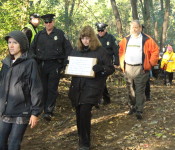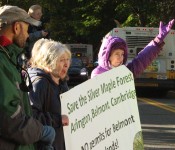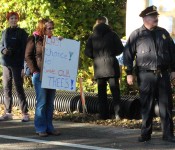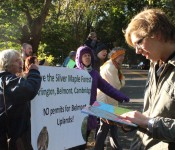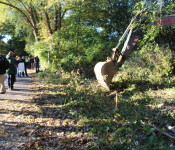When is it too early to sell beer on a Sunday in the “Town of Homes”?
That’s the question before the Belmont Board of Selectmen after hearing a request from the owners of the Craft Beer Cellar to allow the wildly-successful Belmont Center store to swing open its doors at 10 a.m. on Sundays at its meeting Monday, Oct. 20 at the Beech Street Center .
Suzanne Schalow, Cellar’s co-owner (with Kate Baker), said the business, located at 51 Leonard St., is seeking a “Change in Hours” to its business license, from its current noon opening. The CBC operates from noon to 6 p.m. on Sunday and 10 a.m. to 10 p.m. Monday through Saturday.
Schalow said the change would be in keeping with modifications to the so-called state “Blue Laws” approved by the legislature and signed by Gov. Deval Patrick in July allowing retail businesses catering to alcohol and beer sales to seek an earlier opening. Nearby towns, such as Burlington, have approved such changes, according to news reports.
In addition, the new opening time will make the 10 a.m. opening consistent with the other six days.
“Customers are rattling the door” at 10 a.m., wondering why the business isn’t open, said Schalow. She said many customers this time of year are seeking to purchase beer for pro football viewing parties.
Since opening four years ago next month, CBC’s support of the rapidly growing US microbrewery industry with passionate and knowledgeable employees and managers has been a hit with customers, resulting in the Belmont-based business becoming a national retail trendsetter with 12 CBC stores in Massachusetts, Missouri, Florida, Maine and Vermont with another nine – including proposed locations in the Bay State, Colorado, Mississippi and California – in the planning stages.
For at least one Selectmen, the idea of an early opening is a bit off-putting. While praising the store as a great example of a small business doing good for the town, Selectman Mark Paolillo was hesitant to approve the application out-of-hand.
“I’m not so sure that is the right time for us,” said Paolillo.
While the full board delayed making a decision on the application, it wasn’t due to one town officials personal preference but rather if the board has any jurisdiction on the matter.
“I don’t know if we have the right to turn this application down,” said Selectmen Chair Andy Rojas as the new law could have legal sway over local authorities. Rather than a simple up-or-down vote, the board referred the matter to Belmont Town Counsel George Hall for review.
Football and other sports fans will have to wait until noon before stocking up for at least a few more weeks before a decision is known.



